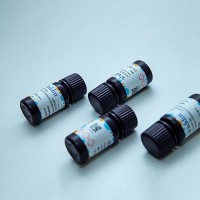The interaction of ligands with G protein-coupled receptors (GPCRs) has been traditionally studied using radiolabelled variants of receptor ligands. More recently, increased knowledge about the way in which GPCRs exist in a highly organised membrane environment has led to an interest in investigating receptor–ligand interactions in single cells. In addition, substantial improvements in imaging technology and an increase in the expense of radioactive waste disposal have resulted in an expansion in the use of fluorescent technologies. One major requirement for these methods is a suitable fluorescent ligand for the receptor of interest. The design of fluorescent ligands for GPCRs is complex, and has to take into account their pharmacological, photophysical, and also physicochemical properties. Here, we describe some basic considerations in the design of fluorescent GPCR ligands, including choice of pharmacological template, linker, and fluorophore. In addition, we describe basic protocols for determining the photophysical properties of the ligand and determining the cellular localisation of their interaction with the target receptors. Finally, we provide a basic protocol for using fluorescent GPCR ligands to quantify the number and diffusion of receptor–ligand complexes in small areas of the cell membrane.






